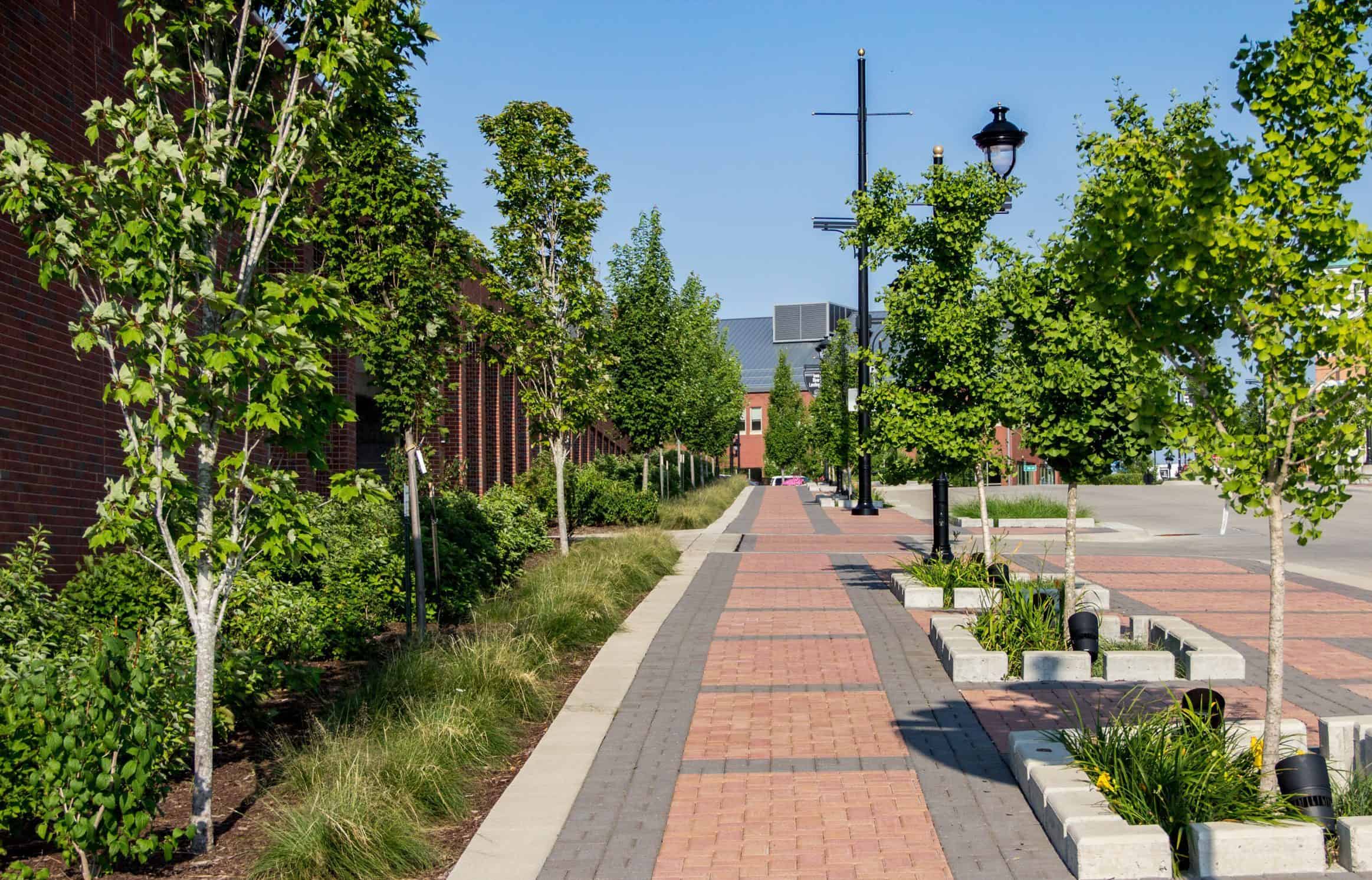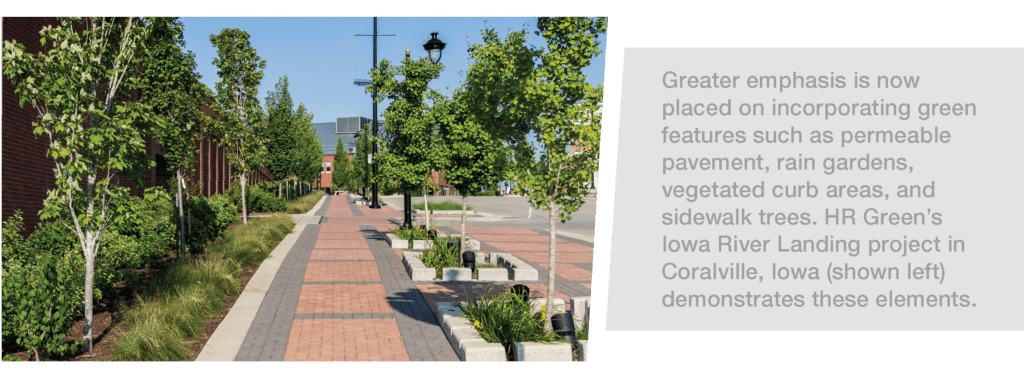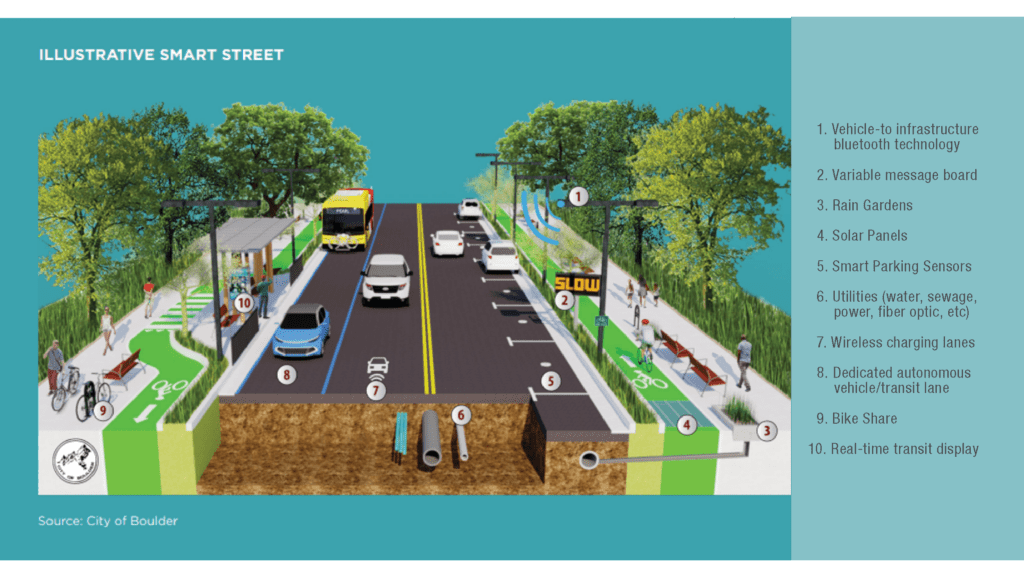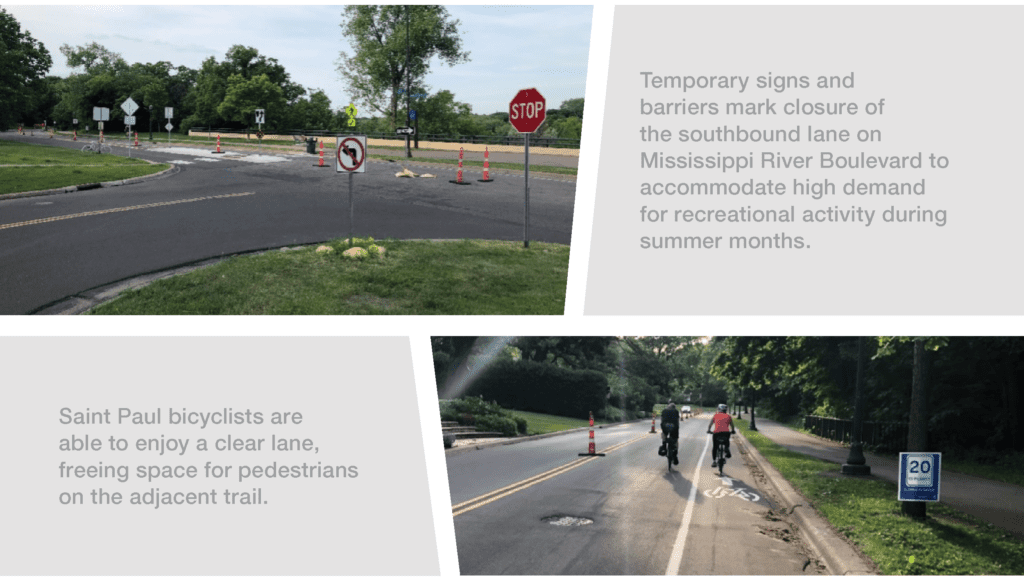
Redefining “Complete Streets”

Let’s Redefine “Complete Streets”
Lookup any definition of “Complete Streets” and you’ll find discussion about how complete streets are designed in response to any setting’s unique context. A small community in a rural setting will have a different complete street than the urban core of a large metropolitan area.
That said, the definition provided by the U.S. Department of Transportation is representative of the standard: “Complete Streets are streets designed and operated to enable safe use and support mobility for all users. Those include people of all ages and abilities, regardless of whether they are traveling as drivers, pedestrians, bicyclists, or public transportation riders.” In this view of complete streets, clearly, the focus is on maximizing modes of transportation that are carried through a corridor’s constrained environment.
However, this somewhat narrow view of a street’s functionality is in need of a broader perspective. Current trends in transportation and community planning are expanding the discussion beyond safety and level of service into areas such as equity and environmental justice, climate change, sustainability, and optimizing the street’s footprint for multi-modal and non-transportation functions.
Here are three key considerations that are leading to an evolving definition of Complete Streets:
1. Street Right-of-Way as an Asset
The City of Minneapolis recently updated its Transportation Action Plan. Recognizing that a full 22% of the City’s landmass is dedicated to street rights of way, Minneapolis is committed to unlocking the potential of its streets as an asset for broader purposes. The new plan addresses a variety of inequities in how streets are used across the city – for example, a renewed emphasis on green space is identified as a measure to provide better stormwater management measures and to reduce the heating effects of pavement. Areas of low vegetative cover (often associated with areas of concentrated poverty) tend to be warmer during hot summer months.
FHWA is also supporting possibilities for “leveraging alternative uses” of right-of-way. An April 2021 memorandum from FHWA provides guidance to State DOTs on potential uses of highway right-of-way. As driving reasons for this guidance, FHWA has identified “pressing public needs relating to climate change, equitable communications access, and energy reliability” that will benefit from consistently applied, programmatic guidance to enable solutions to these needs. FHWA’s initial guidance relates to possibilities around the development of renewable energy projects and the goal of better-utilizing highway right-of-way for the “full value and productivity” of the asset.
2. Multiple Functions, Limited Space
As referenced, the effects of our changing climate have impacted our daily lives and the infrastructure needed to function as a community. One of the areas this has become most noticeable is in precipitation patterns, where rainfall events are frequently more intense than ever before. Traditional street design is often overwhelmed by rainfall and the result is more flooding. Greater emphasis is now placed on incorporating green features such as permeable pavement, rain gardens, vegetated curb areas, and sidewalk trees. These green streetscape design elements help to efficiently capture and manage rainwater where it falls instead of relying upon a limited storm sewer system to convey water elsewhere.

As we try to extract more functions from our streets, technology solutions offer new opportunities to not only maintain but to improve the operational aspects of streets. With relatively minor space requirements, the incorporation of broadband, fiber, and “Internet of Things” tools into a corridor can open new doors for congestion management, parking systems, lighting, and asset management among other benefits, while also providing a critical piece of infrastructure for the entire community.
In addition to providing benefits today, other emerging areas are expected as we see advancements in autonomous vehicles and transits systems. Technology infrastructure needs to be embraced in today’s construction so that the future “smart street” can be implemented with minimal investment. The City of Boulder, Colorado has captured the vision of a smart street in the following depiction.

3. Never forget safety!
Any vision for a Complete Street must continue to embrace the “vision zero” approach for safety. Pedestrian safety concerns have only risen over the last decade, with a 46% increase in the number of fatalities from 2010 to 2019. Preliminary results from 2020 suggest pedestrian fatalities increased nearly 5% this past year despite an overall decrease in vehicle miles traveled (ghsa.org).
Smart Growth for America captures this intent in Complete Streets well with the following proclamation: “By adopting a Complete Streets policy, communities direct their transportation planners and engineers to routinely design and operate the entire right of way to prioritize safer slower speeds for all people who use the road, over high speeds for motor vehicles. This means that every transportation project will make the street network better and safer for people walking, biking, driving, riding transit, and moving actively with assistive devices—making your town a better place to live.”
In Oakland, CA, the city took advantage of an opportunity from the COVID-19 pandemic to create a “Slow Streets” program. The hallmark of this program was to quickly implement street and intersection improvements with signing and low-cost barriers to create pedestrian-friendly zones. While creating space for social distancing measures was a key objective, multiple other benefits were quickly realized across the community.
The safe spaces created by reducing congestion in parks and trails appear to have been popular among residents of Oakland in initial surveys. The city is continuing to evaluate the Slow Streets program and is exploring more permanent improvements after seeing some of the early successes diminished by removed or knocked-down temporary barricades.
The movement toward slower speeds has come to fruition in places like Minneapolis-Saint Paul, where both cities recently reduced the speed limit on all unmarked residential city streets to 20 miles per hour.

Similar to what Oakland has done, the City of Saint Paul has taken lessons learned from 2020 lane closures and continued the measure at some of its most popular recreational areas in 2021. As shown in these pictures, Saint Paul has closed one lane of its popular Mississippi River Boulevard to provide more space for recreational activities. The closure is part of an ongoing community discussion about how to balance the recreational, access, and transportation functions that residents and commuters depend upon for this valued corridor.

How will you redefine your Complete Street?
As you prepare for street corridor improvements in your community, think about these three criteria: 1) how is your street right of way being used as an asset? 2) What functions can you incorporate beyond traditional modes of transportation?, and 3) How will your Complete Street improve safety for all users? As shown in the examples, sometimes temporary measures are appropriate, so that surveys can evaluate public receptivity to changes. At other times, you may need to work with local leaders to understand resource gaps, community needs, or long-term plans to identify creative solutions that optimize your use of the public right-of-way.
So whether it’s a Smart Street, a Green Street, or a Slow Street, the collective momentum for a redefinition of Complete Street is clear. Technology, environment, and social attitudes are changing what it means to “use” a street. As transportation planners and engineers, our opportunity is clear: now is the time to make a long-term positive impact on our communities by creating streets that truly meet the needs of all users.
Subscribe to HR Green Insights
We're dedicated to providing up-to-date knowledge and insights about the topics that matter most to you. We know how busy you are, so we will keep this simple, covering just one topic per email. Once you've subscribed, you can easily customize your preferences to receive only the updates relevant to you.


